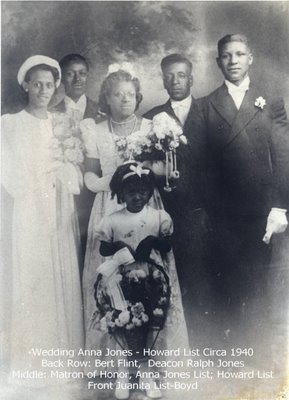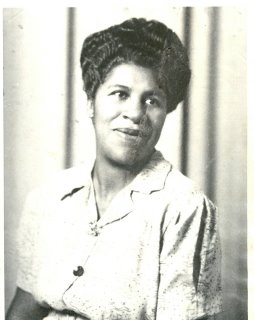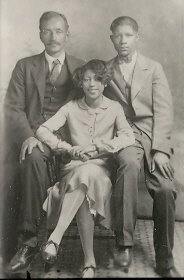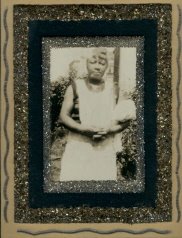
 Samuel Ball’s Known History Prior to the American Revolution
Samuel Ball’s Known History Prior to the American RevolutionAccording to Samuel Ball’s only extant biography he was born in South Carolina in or about the year 1864. He escaped the plantation where he was born about the time that the war broke out in America by joining the King’s troops in that part of the country. It seems certain that this occurred after November 1775 as the troops in South Carolina were under the command of Lord Cornwallis. Sam’s escape to the Kings troops was predicated upon a certain proclamation made in Virginia.
At Kemp’s Landing, Virginia, on November 14, 1775, John Murray, Earl of Dunmore and Governor of Virginia issued a proclamation in which he declared all Black males free who would join His Majesty’s Forces in the battle against rebel Black and White colonists of the newly minted, or about to be minted, nation called the United States of America. Samuel was a teenager when he made his bid for freedom by escaping to the protection of the British.
Soon after joining the King’s troops he was ordered to New York with General Clinton, who ordered Samuel to join troops under the command of Major Ward. Major Ward’s command was in the Jerseys at Bergen Point and where Samuel worked among the British troops until the end of the war when, after the Americans had won their freedom from the British, Samuel was forced to evacuate with other loyalists to British territories in order to obtain his own freedom. Of all the ironies in this story, this one is by far the most incredible.
In 1783 he came to Shelburne (Port Roseway) in Nova Scotia and remaining there two years. He left Shelburne and went to Chester, N.S. where at the time of his 1809 petition we learn that he had resided on Oak Island for some twenty-three (23) years.
In this Memorial, which today we would call a petition, Samuel, a Black loyalist, requested his allotment of land promised to Black people, who left the United States in allegiance to the loyalist cause. Samuel speaks to us through a justice of the peace, Thomas Thompson, who writes:
“Your Memoralist has no lands but, what he has purchased, never having got any from government, and there is a four acre lott vacant, No. 32, on Oak Island, joining a lott purchased by your Memoralist. ---------- Your Memoralist therefore prays, Your Excellency well be pleased to grant, or otherwise order him to have said Lott – your Memoralist has but one son living. ----------
Chester, 9th September 1809
This day the above named Samuel Ball came before me, and made oath on the Holy Evangelist, that what is stated in the above memorial is strictly true, which I verily believe to be so.
I do hereby further certify that I have known said Samuel Ball, above twenty years, and I believe he is an honest, sober and industrious settler, worthy of encouragement.
Thos. Thompson, Jus’ Peace.”
The lot was granted as a license of occupation and Samuel Ball owned nine (9) four (4) acre lots on Oak Island by number as follows: lot #s 6, 7, 8, 24, 25, 26, 30, 31, and 32 as shown on the above map (Click on the map to enlarge it, and note that the name, Samuel Ball, is part of the original map.)
Samuel Ball and a “servant,” Isaac Butler, worked and cleared the 35-acre farm. Accounts of their lives by other writers indicate that there were silhouettes images of Mrs. Ball and others in the rooms of the house built by Samuel.
Samuel died on 14th December 1845; he was 81 years of age, leaving behind a wife, Catherine, a grandson, Simeon, and as well as Isaac Butler. Samuel’s recorded will left the land on Oak Island to Isaac Butler under certain conditions and hereby hangs yet another of Oak Island’s mysteries.
The confluence of many factors creates the charm and the allure of this romantic and unexpected saga that is unfolding as you read it. Among the compelling factors is the geography of Mahone Bay itself. It is truly a magnificent bay twenty (20) miles long and twenty (20) miles wide and the Tancook Islands which shelter the bay and also provide absolute security to those anchored ashore within its reaches. There are some 350 islands in the bay and Oak Island is but one of them.
The names associated with the mysteries of the island are another factor accounting for the international interest in and the long, enduring shelf-life of Oak Island. Associated with the island is the name, i.e., of Edward Teach, otherwise known as the infamous pirate, “Blackbeard.”
You know you have a growing legend when the name, Captain William Kidd surfaces and his treasure trove is believed to be stashed somewhere on the island. Then, you pile on many other names and name after name of famous adventurers, and politicians, such as U.S. President Franklin D. Roosevelt, wealthy businessmen and treasure hunters become associated with the growing legend.
Add also the accounts of failed hunts for the treasure that goes unrewarded but, for finds of some exotic artifacts, uncommon to Nova Scotia but associated with south seas pirates and you have a colossus, a litany of strident personalities confessing their many failures to find the treasures for many centuries and you wind up with a magnificent obsession, Oak Island.
Among these names and legends one unexpected name, the name of Samuel Ball arises above the rest, primarily for its simplicity – notably for farming some 35 acres of the magnificent obsession, Oak Island. Land that this Black man assembles, year after year, while others were vainly treasure hunting. Samuel’s life seems so far removed from the realities of life as defined by the high and mighty. He was a man of no great stature or social position, or class rather, he was a lowly man of Africa, a former Black American slave, who exhibited all of the accomplishments of a truly remarkable man, who might have, under different circumstances, been referred to as a major actor in a truly great adventure story and mystery that has become known as Oak Island.
Though unacknowledged, he is all of this, and more. The time has come to recognize what he managed to accomplish. Samuel’s life shows that no matter whom you are you have a contribution to make and you can excel in some, if minor, way; he was a “stand up” Black man who has come to symbolize what is truly great in the pioneering spirit of Black people in this region. What his life demonstrates is that you can become a “someone,” no matter who you are, if you stick to your goals and work steadily hard to a plan, without expecting acknowledgement.
The graphics above:
The lots on the map above in green are those owned by Samuel Ball of Oak Island. If you right click this map above you will see the name of Samuel Ball on lot 32 that was on the map and not superimposed on the map by this writer.
The photo above was taken by the writer on Oak Island on July 6, 2005 with the principle owner of the lots today on Oak Island, Dan Blankenship.
As Always, Well wishes,
F. Stanley Boyd











